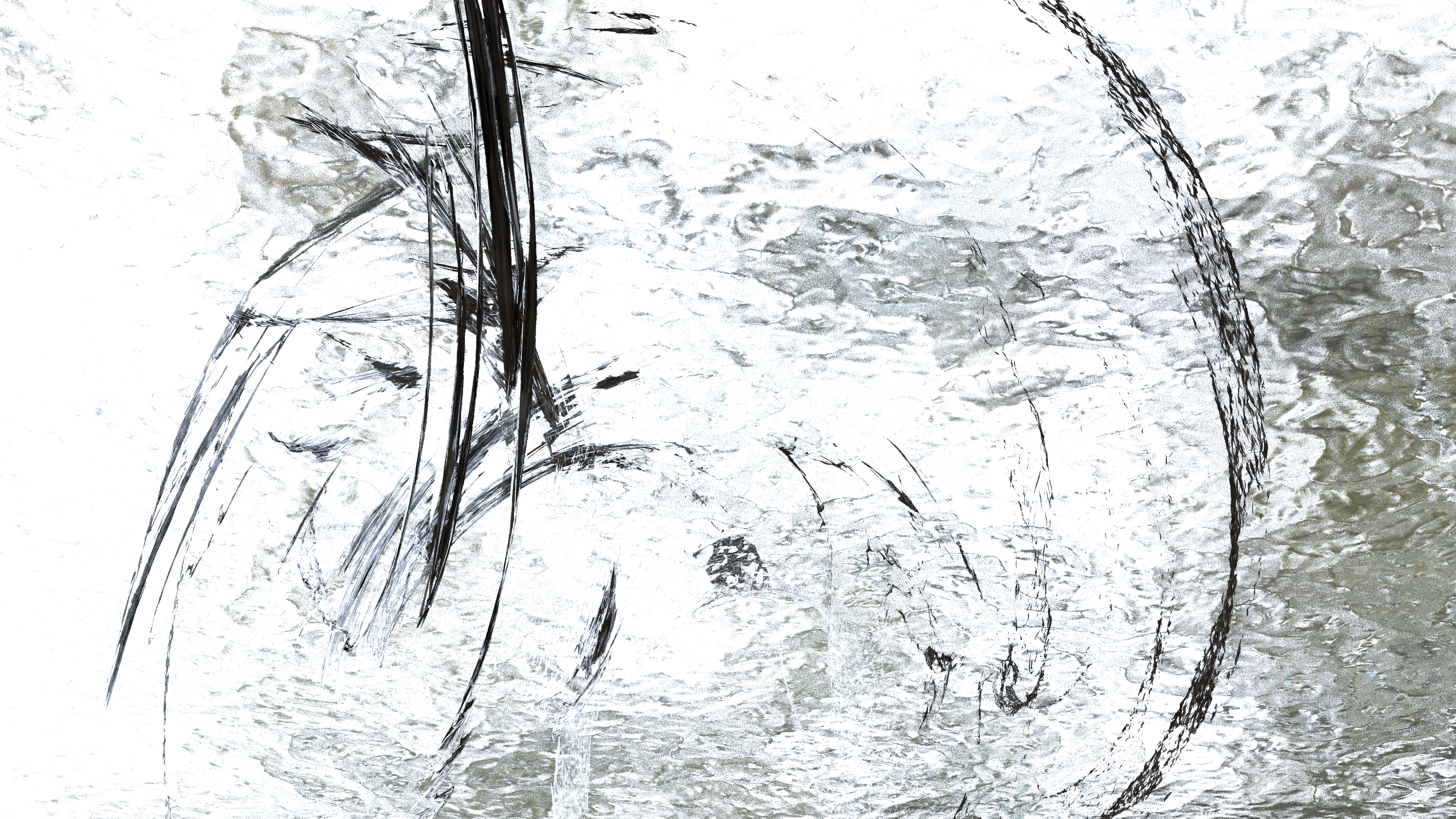攻殻機動隊 M.M.A. - Messed Mesh Ambitions_

What Lies Between “Ghost in the Shell” and “Ghost in the Shell 2: Innocence”
Article: Naoya FujitaIllustration: Heijiro Yagi
What Lies Between "Ghost in the Shell" and "Ghost in the Shell 2: Innocence"
Our final piece comes from Naoya Fujita, a literary critic and supervising editor of this collection. In his book “The Theory of Ghost in the Shell” (Sakushinsha, 2021), he described the series as a form of Japanese cultural history, evolving alongside technology and society into “a tradition that creates a future.” In this article, Mr. Fujita recounts the influence “Ghost in the Shell” (“GIS”) has had on him, how his analysis of the work has helped him reconcile with the dizzying changes taking place in modern society, and how the series stands on the very boundary between fact and fiction.
He’ll also look back on the contributions of other authors to this collection. These articles were originally conceived as supplementary material for an extended edition of “The Theory of Ghost in the Shell.” What new insights have they brought to the theme of “The East” and how does it relate to “GIS”? Fujita tells all.
目次
“Ghost in the Shell” and Self Discovery
The year was 1995. I was still in elementary school when I first encountered the internet. Even then, I got the sense that technology could show me things and give me experiences like I had never seen before. That was also the year “Ghost in the Shell” hit theaters. I watched the characters merge their bodies and consciousnesses with advanced technology to travel through cyberspace and imagined myself doing the same. A whole new world seemed to open before me. I embraced it wholeheartedly. Alas, the real internet was nothing as glamorous as the cyberspace adventures depicted in “GIS.” Anonymous message boards like 2-Chan were little more than outlets for people to vent unsavory feelings and opinions. The information superhighway was flooded with hate speech, conspiracy theories, and flame wars between increasingly aggressive and entitled users. Far from technology opening a new world of possibilities, it only brought humanity’s baser aspects into stark relief.
The new millennium brought the release of “GIS: Stand Alone Complex,” which inspired me to get involved with various political groups, both online and offline. I felt a real affinity for activities such as copylefting and hacktivism and championed their causes. I still believed in the internet’s potential to bring about justice and freedom. It wasn’t like traditional forms of mass media; it was something that could bring about real change. But then, around 2017, I began to wonder if it had all been for nothing. The internet had become such a disaster that I could no longer maintain my old, idealistic outlook. My faith in the cultural, artistic, and political causes I had previously supported was shaken, and I was seized by a profound melancholy. Had the anarchist and libertarian nature of online culture had a negative impact on the world? Had this platform built on “freedom” just become a hotbed of lies and hate, prompting actual violence and death in the real world? Had the changes in industrial structure brought about by advanced technology only led to a wider rich-poor gap, making a mockery of human dignity? Despair seemed inescapable, with radical groups and conspiracy theories rising one after another, as if the world were longing for destruction. I decided to completely reexamine my past ideas and actions. “GIS” had had a huge influence on me, changing and evolving alongside my own ideology. As such, it provided a perfect target for a detailed analysis. This eventually became my 2021 book, “The Theory of Ghost in the Shell.”

Eastern and Western Thought: The Key Differences
On my second critical look at the series, I made a special effort to pay attention to certain aspects I had merely skimmed over before. One of the things that stood out the most was the influence of traditional Japanese mythology, Shinto, and Buddhism. I was born in 1983 in Hokkaido, a child of the “new media” generation. Computers, video games, and animation were my bread and butter. Traditional culture seemed old-fashioned in contrast; it was something to ignore or even rebel against. I’d been so focused on rushing headfirst into the future that I’d closed my eyes to a large part of “GIS’s” identity. I set out to change this. I read books about Shinto and Animism. I visited Noh theaters and sacred sites around the country. As I started to engage with Shinto and Buddhism, I felt my perspective changing little by little.
Up until then, I’d been a firm believer in the power of the intellect, prizing science and reason above all else. I’d longed for “progress” almost obsessively and advocated any concept or idea that would contribute toward it. That I was a part of society, of history, of life, inextricably linked to the natural world around me, was something that never even crossed my mind. Now I knew that I had to abandon the idea that we were just a few smart choices away from a futuristic utopia. Such salvation may yet be in humanity’s future, but I was just one man. I only had a limited time on this earth, and the realms of infinity and the gods would remain beyond my reach. I had to accept that I would one day grow old and die, as much a part of the ecosystem as any other animal. Strangely, once I did this, I started to think of nature, of my body, and of life itself as something sacred. I was no longer focused on reaching some abstract notion of infinity but saw the spiritual nature of all things existing in the here and now. This was fresh territory for me, and it didn’t escape me that it had a lot in common with the animistic traditions I had treated with such contempt before. In a way, this was the revelation I’d been waiting for.
What I felt now, I was convinced, lay somewhere in between the ideologies of the first and second “GIS” movies. “GIS 2: Innocence” depicts a future in which the body, the environment, and even animals are all linked by a kind of spiritual essence, in many ways a rejection of Cartesian dualism. It may also be considered a criticism of the original “GIS’s” eagerness to discard or go beyond such conventional existences. On the one hand, we have the idea of transcending our living bodies to exist as pure consciousness. On the other hand, we have the view that our mortal existence gives us a spiritual connection to the world around us. For the purposes of this collection, I tentatively labeled these conflicting viewpoints as “Western” and “Eastern,” respectively. They reveal such fundamentally different outlooks on the world and our lives that I couldn’t help but be humbled. The more I learned, the more it became clear that I had been blind. These articles can be seen as an extension of that feeling and of my efforts to know more.
Clashing Viewpoints
Reading Masamune Shirow’s original “GIS” manga and “GIS 2: Man-Machine Interface,” terms pulled from Japanese Shinto, Buddhism, and other spiritual disciplines come up frequently. While I’d only skimmed over them in my youth, this time I gave them serious attention. I felt that the author was drawing attention to the parallels between these religious ideas and those in modern information theory, creating a sense of continuity between old and new. Whether such connections really exist is not for me to say. But there’s no denying that new technology or philosophies, especially those imported from abroad, are always met with some resistance. It takes time for people to properly come to terms with these ideas. In the Heian period (794–1185), people spoke of “Japanese Spirit with Chinese Learning.” In the Meiji era (1868–1912), “Japanese Spirit with Western Learning” was the watchword. Perhaps what “GIS” shows us could be called “Japanese Spirit with Information Learning.” It imagines a future in which the essential Japanese spirit can endure even in a technologically advanced information society. During Japan’s periods of modernization and post-war recovery, the country had to deal with an influx of new cultural influences. Then, as now, there were criticisms of the changes this brought and lamentations that we were losing our own cultural identity. Many of these ideas were expressed in art and literature. It’s said that the world is currently going through a fourth cultural revolution. The resistance and general inefficiency of our response to this digital transformation in Japan are plain for all to see. Outdated systems, customs, and viewpoints persist in our modern society. The clash between those who stick doggedly to the old ways and those who champion the new is just as fierce as ever. It seems to me that progress needs to feel like an extension of the past. Learning to create that bridge, that sense of continuity, will be especially important as we move forward into an uncertain future. Neither is this a uniquely Japanese situation. It could apply to any society that experiences rapid change in a relatively short time.
I believe “GIS” shows us potential for continuity not just in time but also in space. Consider William Gibson’s “Neuromancer,” said to be the forerunner of the cyberpunk genre. It takes place in Chiba City, in Japan. Similarly, the futuristic Los Angeles seen in Ridley Scott’s highly influential “Blade Runner,” with its streets lit by neon signs shining through the radioactive rain, doesn’t look too dissimilar to modern Japanese cities. Cyberpunk came against a cultural backdrop of Japan-bashing and discussions on the “Yellow Peril.” In America, anti-Asian sentiment and resistance to Japanese technology and influences ran particularly high. In some ways, the high-tech cityscapes of cyberpunk are a depiction of this imagined Asianization as well to express feelings toward such a future. The discrimination between replicants and real humans can also be read as a metaphor for the tension between the Asian and Western worlds at the time. Yet another interpretation is that the genre represents the inner conflict felt by predominantly Christian societies as they attempted to reconcile Japan’s rapid success with its unscientific Animist background. Where cyberpunk really shines is as a cross-cultural genre. It helps us to imagine an advanced future where fundamentally different civilizations have become integrated, offering us valuable insights. To put things differently, it shows us a world where fundamentally opposing viewpoints are creating something new together. Again, this doesn’t only apply to Japan and America, or Asia and the West. Conflicting nations in the Arab world could also aspire to such a future. We must overcome cultural clashes if we truly want to move forward.

A Harmonious Future
These were the ideas that led me to suggest “The East” as this collection’s theme when I took on editing duties for it. Having now read books on AI from Silicon Valley and MIT scientists, as well as Japanese researchers, I notice the difference in our viewpoints more than ever. Much of what comes out of America is optimistic about the idea of life existing as information and the possibility of one day leaving our mortal bodies behind. Japanese ideas, meanwhile, are built on the assumption that our lives and our bodies are inextricably linked. To phrase it in terms of comparative culture, the discourse around AI highlights our cultures’ values and how these influence the direction our research and development takes. Using this idea as a basis, I wanted to explore the possibilities and limitations of “Eastern AI.” That is really what inspired this whole project. I was incredibly pleased to hear that this series of articles is going to be translated into English. While my primary concern has been to explore the concept of “The East,” I also believe that mutual understanding will play a part in technological and AI research in the years to come. By better understanding our differences and reassessing them, we can pave the way for, or at least consider the viability of, progressing along the same path.
It’s well known that Steve Jobs was a devotee of Zen. Silicon Valley has also been described as “a coming together of hippies and yuppies.” Perhaps that spirit of freedom and philosophy of peace and love helped to foster greater creativity. Now is the time to build on that foundation. “The East” is just one region and is itself composed of many diverse cultures. Differences exist not only between communities but among individuals as well. That said, I envision a future where we can accept and reconcile these differences to create a new, more advanced society together.
Will such a thing come to pass? Is it even possible?
That, dear reader, is all up to you.
Naoya Fujita
Naoya Fujita is a literary critic and doctor of philosophy. Born in Sapporo in 1983, he studied at Waseda University and the Tokyo Institute of Technology, Department of Value and Decision Science. His published works include “Existence Within Fiction,” “The Theory of Shin Godzilla,” “The Theory of Ghost in the Shell,” “The Theory of Makoto Niitsu” (Sakuhinsha), “21st-Century Zombie Theory” (Chikuma Shobo), “Flaming for Fun” (Danundo), “The Theory of Shin Evangelion” (Kawade Shobo Shinsha), and “An Examination of the Works of Naoki Hyakuta” (Shueisha, co-authored with Shunsuke Sugita).
